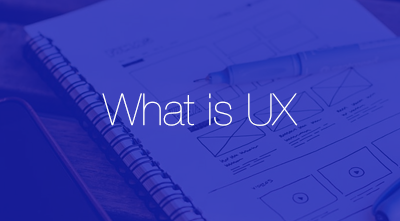What is UX?
UX design is the process of product designing that is easy to use. It's about magnifying the experience that user have while they are using your product.

UX is an abbreviation for user experience, which is most often used when describing user experience design. What this means is a design that is fun to use, simple to use, and useful for who it is intended for. In other words, it’s about taking your product and making it more valuable to your customers base.
Why UX Matters
User experience matters because showing an understanding for your customers makes it more likely you meet their needs and desires. The process of designing for user experience involves getting into the brain of your customers and finding out what they want to be, what they want to feel, and/or what they want to do. If you can fulfill any of those questions, you’re doing a good job at fulfilling UX design.
UX Research Importance
Research is often the first step toward building a design, in order to ensure an understanding of customers and needs. This might include surveying customers on various designs throughout the process of the user experience design process. Nobody can better tell you what works and what doesn’t than the people who are going to be using your product in the future. So let them speak to you.
Fundamentals of Design
There are a number of elements that come together to provide a final design. Each has their place and each should be considered both alone and in the context of the final design. We further explain these fundamentals just below:
- Space – space refers to the distance around, below, within, and above an element in your design. Using both negative and positive space in user experience design is important.
- Repetition – tying together elements can be done with repetition. Using the same sort of elements can make them feel consistent and part of a whole, which is what you want.
- Alignment – alignment speaks to our need for order. Aligning your elements in a visual manner allows customers to better connect with them.
- Distance – the proximity used is another relationship between elements, allowing them to connect and form a story.
- Balance – balance simply means incorporating things that play off of each other. An example might be using a large triangle in the center of your design, with smaller squares off to the side.
- Contrast – contrast refers to things like foreground and background or black and white. This ensures you design is interesting and engaging, which makes it more likely to be appreciated.
Final Thoughts
User experience designers need to understand the many ways that elements of design can play together. That said, each project is likely to require a different touch. It’s also not something that can be assessed by page views or conversation rates. This can, of course, make it hard to ensure that you’re doing the right thing. However, in the end, it’s a worthy part of design that is important. If customers feel your design resonates with them, they’re likely to stick around.